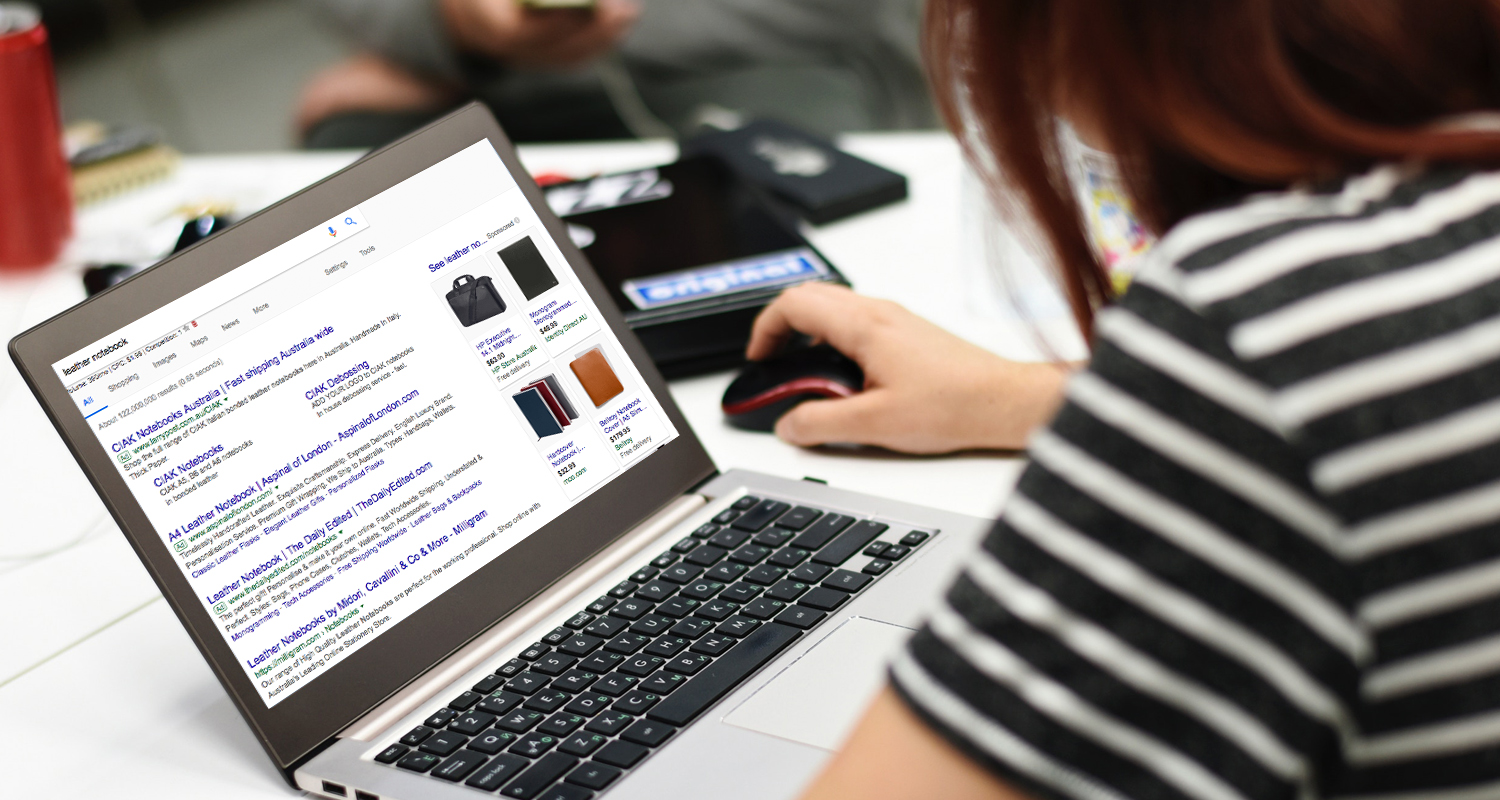When it comes to customer acquisition for your eCommerce business, there are two approaches you really need to explore: Either you market to customers come to your store or you go to where they like to shop – by listing your products on different marketplaces and comparison shopping engines.
It’s all part of a strong multichannel retail strategy.
Most online marketplaces are fairly straightforward and easy to understand but Comparison Shopping Engines (also known as CSE’s) can be a little more complicated. here’s a multitude of them around, and new ones popping up all the time. So how do you know which ones will work for your business?
What are Comparison Shopping Engines (CSE’s)?
Comparison shopping engines are price comparison websites that pull and aggregate product information from various online retailers into a single search engine.
They are a convenient way for consumers to compare product features and prices from multiple sites on one page. Once a consumer has decided which option suits their needs, they can click through to the merchant’s website to complete the purchase.
For you, as a retailer, most CSE’s are product ads that operate on a cost-per-click (CPC) model, so you only pay when a consumer clicks on your product, no matter how often it gets displayed.
Listing your products on a CSE is a great way to build brand awareness and reach new customers. And these customers are interested buyers so any traffic that’s generated for your website are qualified leads with a strong potential for conversion to a sale. And this is why CSE’s really can’t be ignored as a potential sales channel for your business.
Comparison Shopping Engines vs Marketplaces – What’s the Difference?
As we alluded to earlier, there are definitely some similarities between CSE’s and online marketplaces such as eBay and Amazon. Consumers go to these sites to search for products and shop.
Both CSE’s and marketplaces offer the ability for consumers to compare products however on a marketplace the transaction takes place within the platform whereas on a CSE site consumers are redirected to a merchant’s online store.
The other major difference is that you’ll pay per click with a comparison shopping site (regardless of whether a sale occurs) whereas you’ll pay a percentage of your sale price on a marketplace platform.
Top Performing Comparison Shopping Engines
Most CSE’s are fairly comparable in terms of the way they work; however there are some differences in terms of reach and conversions. Read on to find out how 14 of the most popular CSE’s stack up.
1. Google Shopping
Google Shopping is one of the most well-known comparison shopping engines and you would no doubt be familiar with their ads that commonly appear at the top or side of the search results when searching for a product in Google.
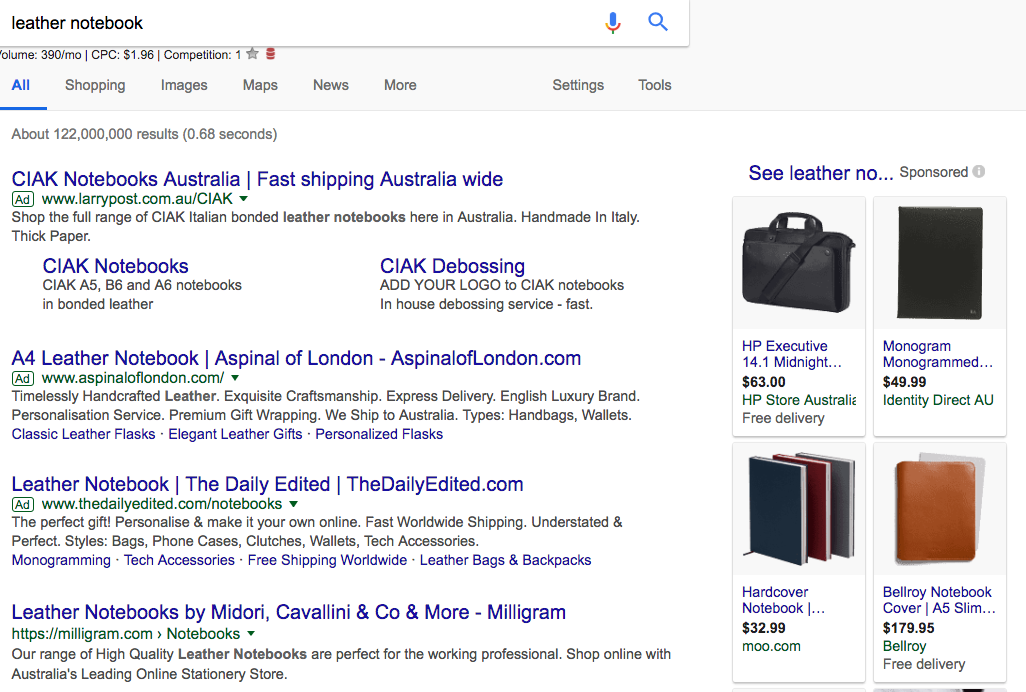
CPC Strategy reviewed the performance of various CSE’s and ranks their effectiveness. It’s not a surprise that Google Shopping nearly always takes out first place.
Google Shopping lead the way in terms of Cost of Sale (COS) at just 9.82%, and they also generated the most traffic and the most revenue. The average rate of conversion was only slightly behind Bing and Amazon at 2.48%.
To learn more about how Google Shopping campaigns can work for your online store, read this blog post about Google Shopping.
2. PriceGrabber
PriceGrabber reaches over 100 million consumers in 26 countries and has the added benefit of a market report allowing retailers to track product trends.
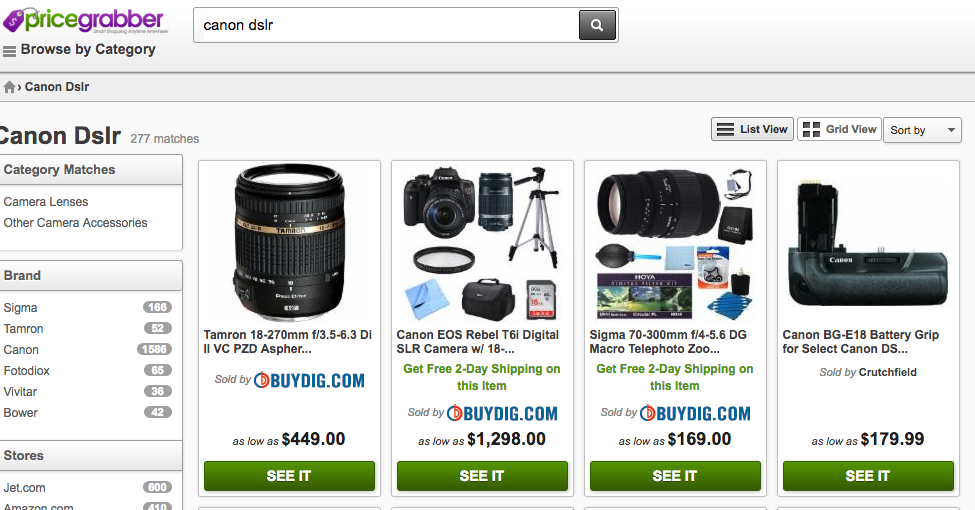
If you offer free shipping, you can add this into your listing, and your PriceGrabber listings will also appear on Yahoo Shopping, which means more bang for your buck!
3. Shopzilla
Shopzilla (now Connexity) is another key player. They have no setup fees and your listing will appear on a number of other sites in their network, including BizRate, PriceGrabber and Become.
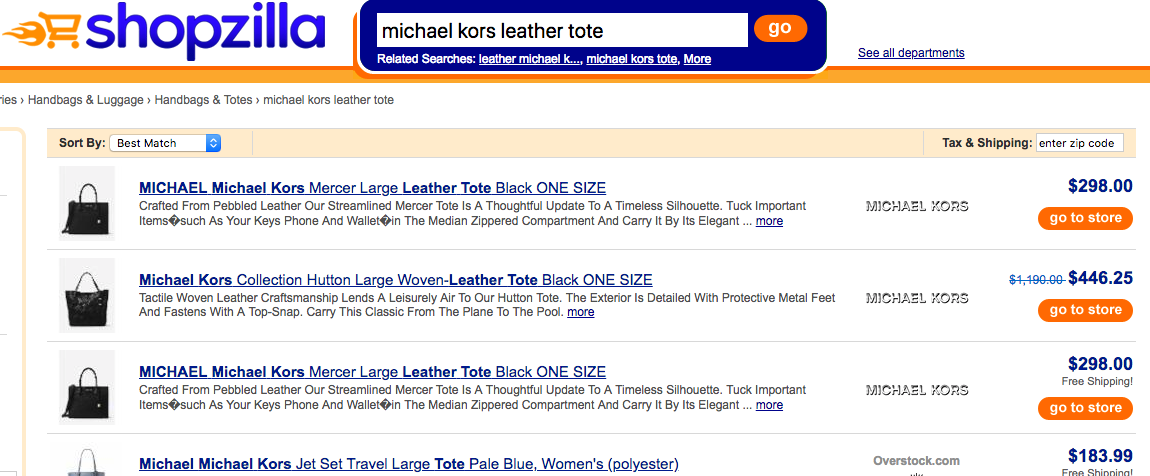
They’ve been around since 1996 so they’ve got a proven track record.
4. Amazon
Technically a PLA (product listing ads), Amazon ads are worth a mention here as they work in a similar fashion to CSE ads, and offer some of the lowest CPC rates, with a reported 2.6% conversion rate. You can choose a combination of keywords, products, and product categories to target your ads, which will display at the top and the side of the results when a shopper searches for a relevant item.

5. eBay Commerce Network
This network always rates highly in terms of traffic and reaches shoppers on shopping portals, search engines, content sites and ad-exchanges. There’s also a free ROI tracker which helps you measure and optimise your campaign’s visibility, and order level performance data.
[2021 Update: eBay discontinued eBay Commerce Network last May 1, 2019.]
6. Bing
Bing has always been considered second to Google as a general search engine it’s well worth remembering that it’s owned by Microsoft and also powers Siri search on Apple devices. The site ranks highly on conversions with a rate of 2.81% and is a lower CPC compared to Google.
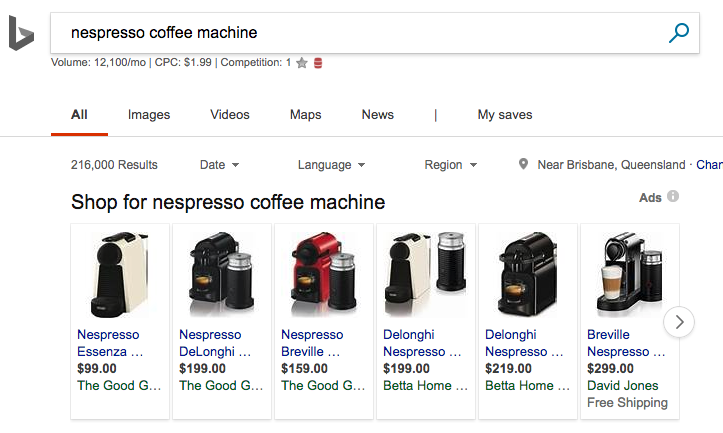
7. Become
Over 500 websites make up this global shopping network and it’s renowned for offering the best shopping deals available online. Plus there’s no initial sign-up fee.
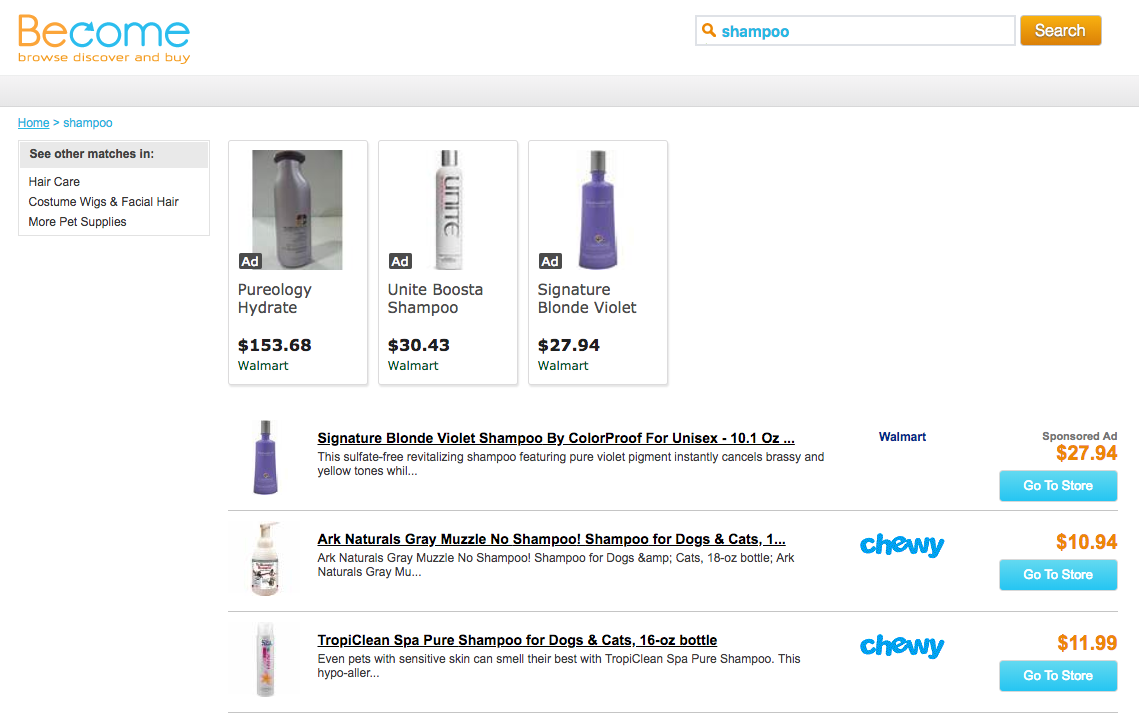
8. Pronto
This comparison shopping engine is let down by it’s high cost of sale according to CPC Strategy at over 30% and a low conversion rate but they’re still one of the higher performers and worth consideration.
Australian Comparison Shopping Engines
The list of CSE’s available for online retailers is almost endless but these nine options rank consistently high across industry research. When we surveyed our Neto customers, we found that Google Shopping rated as their number one choice with Bing Shopping also highly regarded.
If you’re selling in the Australian market, we also recommend that you check out these additional four price comparison sites.
9. MyShopping
MyShopping is a sizeable CSE with more than 3 million unique visitors every month and there’s no set up fee plus a choice of two payment plans.
10. Shopbot
Shopbot has more than 50 million online shoppers this price comparison site also claims to be a last click channel with a conversion rate 3x that of any average channel and a ROI of 5x the industry average.
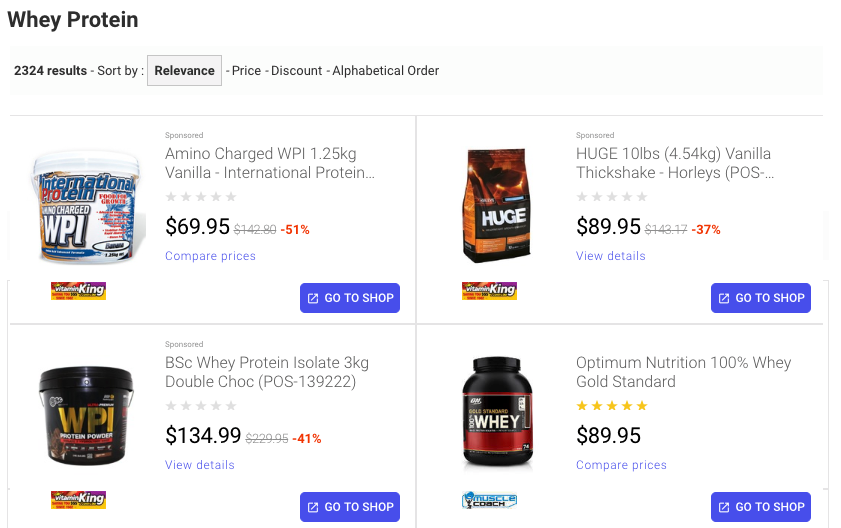
The good thing is they offer a range of packages to suit your needs. With a beautiful interface allowing shoppers to easily compare prices, the end-user experience on Shopbot is top-notch. As a bonus they also have great articles and reviews on popular products.
11. GetPrice
GetPrice has consistently rated highly amongst ecommerce websites, claiming to bring in a total of 45,000 impressions per day and 15,000 leads generated across all of their listings. For the retailer you’ll find good budget control and sales tracking tools plus competitive pricing information. And there’s no minimum spend or contract period.
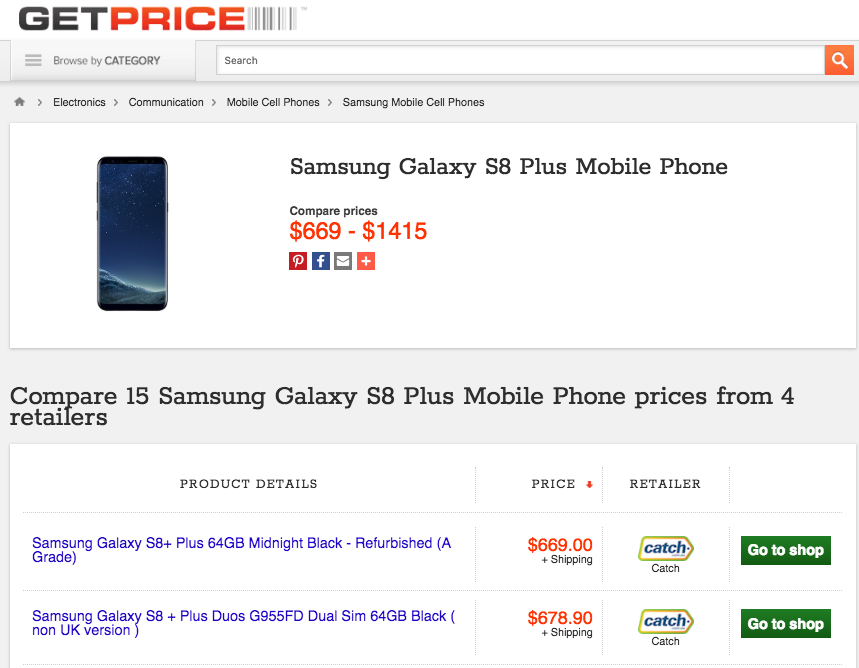
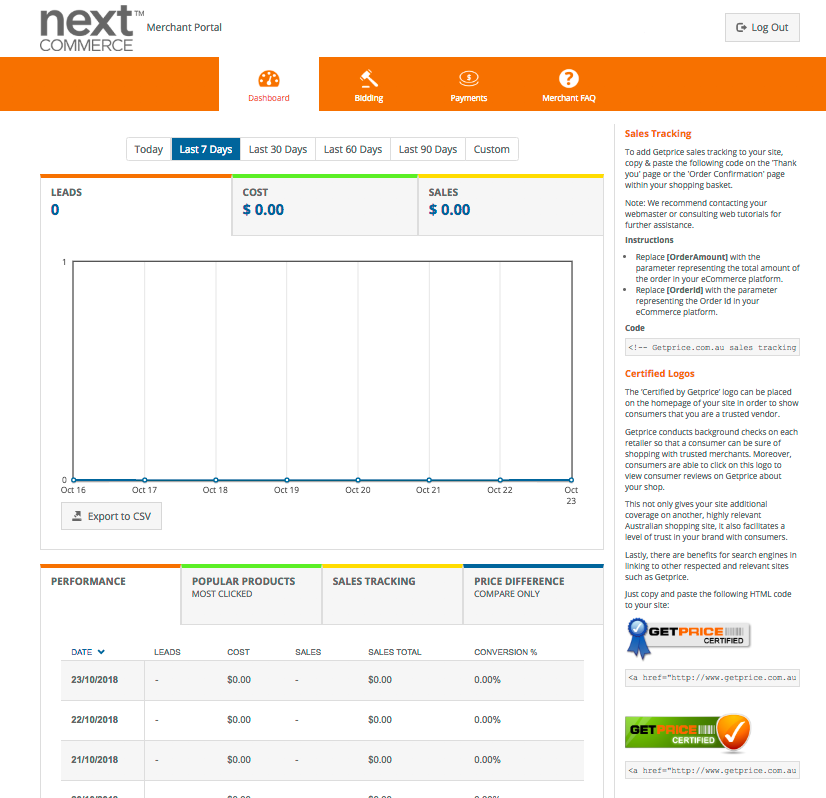
Get Price merchant admin panel where merchants can track their performance (clicks, popular products, sales and price competition).
12. Shopping.com
Shopping.com is owned by eBay and also partnered with The Find this CSE offers lots of user-friendly tools like product reviews and popular product listings.
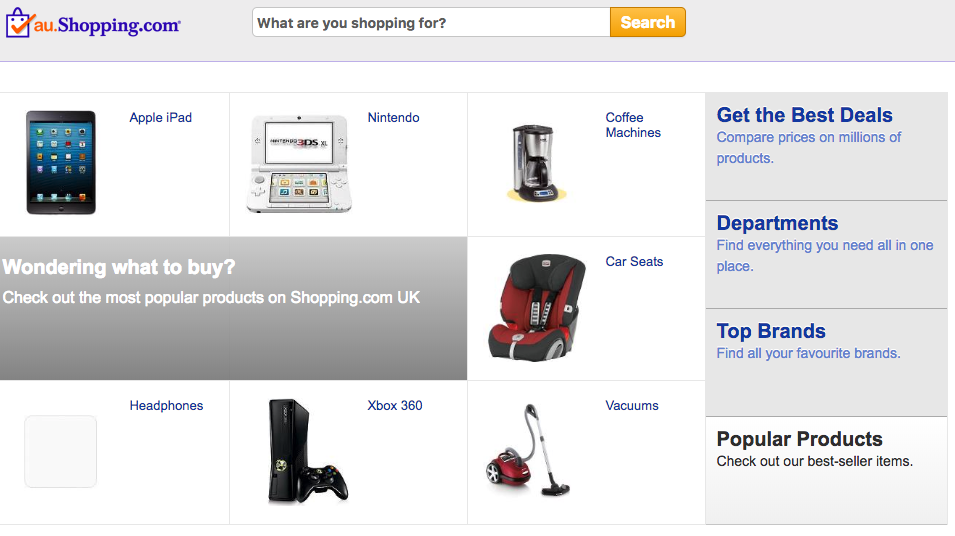
How to Stand Out on Comparison Shopping Engines
Competitive Pricing
Price is typically the number one point of comparison on these websites so it’s best to ensure you’re able to offer something that’s relatively competitive.
Your product doesn’t have to be the cheapest as this often results in a race to the bottom, but you need to be in touch with what your competitors are offering.
This also means that CSE’s are best suited to standard, branded products which can be compared like for like.
High Quality Product Images
Your prices may not be the cheapest but professional product images can definitely win you sales and really differentiate you from other merchants.
Be sure to include high-quality photographs of your product from multiple angles as well as photos of it in use and the product’s details.
Different shopping comparison websites have different image requirements. For example, if you’re using Google Shopping, be aware that they don’t accept any images with watermarks, company names or pricing promotions within the image.
Let your hero image really show off your product in the best possible light. After all, your listing will only display one image so we want the first impression to really count.
Detailed Product Names and Descriptions
From the product name to the description, all your content needs to be as detailed and specific as possible. Include brand names and models as well as measurements and color availability. You may also need to include UPC numbers; Google Shopping uses UPCs to verify a product’s authenticity and is mandatory for certain types of products like brand name items. And don’t forget to mention current promotions such as free shipping that might help differentiate your listing!
Getting Started
In most cases, once you’ve created an account on your chosen CSE, it’s just a matter of submitting your product data feed and entering information about your business. Your data feed can be a simple spreadsheet in a specific format to suit the CSE and should be updated regularly.
If you’re operating from an ecommerce platform such as Neto, gives you the capability to produce an automated feed via a Shopping Engine Add On (.txt for Google Shopping and .csv for all others). You’ll just need to connect to the CSE, provide the relevant data, then edit your products from within your platform. Whichever way you choose to work with a CSE, you mustn’t set and forget. Work to optimize listings and prices so you’ll convert to sales and always keep an eye on your competitors.
In Conclusion
With a Cost Per Click pricing model and a huge potential audience of ready buyers, Comparison Shopping Engines are a worthwhile addition to your retails channels. In most cases, you won’t be stuck with a contract. Try out a few options to see which suits your business, achieves the best results for you and is easy to use and understand.
Author Bio
This blog was written by Ryan Murtagh who started Retail Management Platform, Neto, after encountering first-hand the problems of trying to efficiently scale a retail business. Today, Neto is an all-in-one solution for ecommerce, point of sale, inventory and fulfillment and has helped thousands of retailers grow profitable businesses.

